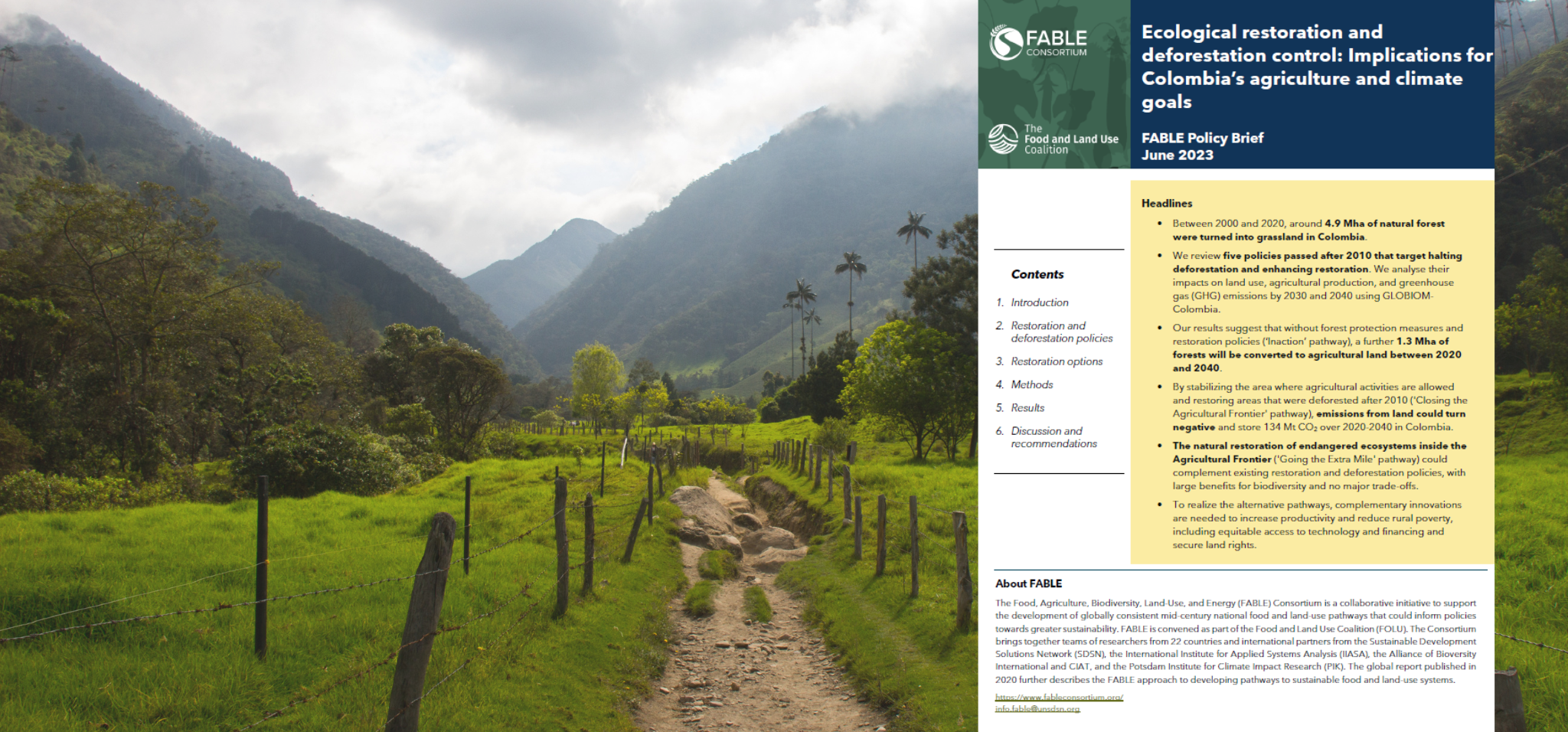
New research conducted by the FABLE Colombia team led by Javeriana University, and the International Institute for Applied Systems Analysis (IIASA) sheds light on the urgent need to adapt restoration policies in Colombia. This policy brief presents key findings from the analysis, highlighting the importance of focusing on specific areas that have not been adequately addressed in current restoration efforts. By considering these overlooked regions, Colombia can mitigate the adverse effects of deforestation, promote biodiversity conservation, and contribute to climate change mitigation.
Using GLOBIOM, the authors review targets and actions from five Colombian policies aimed at halting deforestation and enhancing restoration, and models their impacts on land use, agricultural production and greenhouse gas emissions by 2030 and 2040 under three alternative pathways:
• Inaction Pathway: Agricultural lands expand freely, except inside protected areas where deforestation is prevented, and no forest restoration takes place.
• Closing the Agricultural Frontier Pathway: Expansion beyond the Agricultural Frontier stops, with zero deforestation after 2020 in all locations, and natural forest regrowth occurring on pastures that were deforested between 2010–2018.
• Going the Extra Mile Pathway: Natural forest restoration occurs in priority areas with endangered forest ecosystems, low agricultural productivity, and scope for natural regeneration and passive ecological restoration.